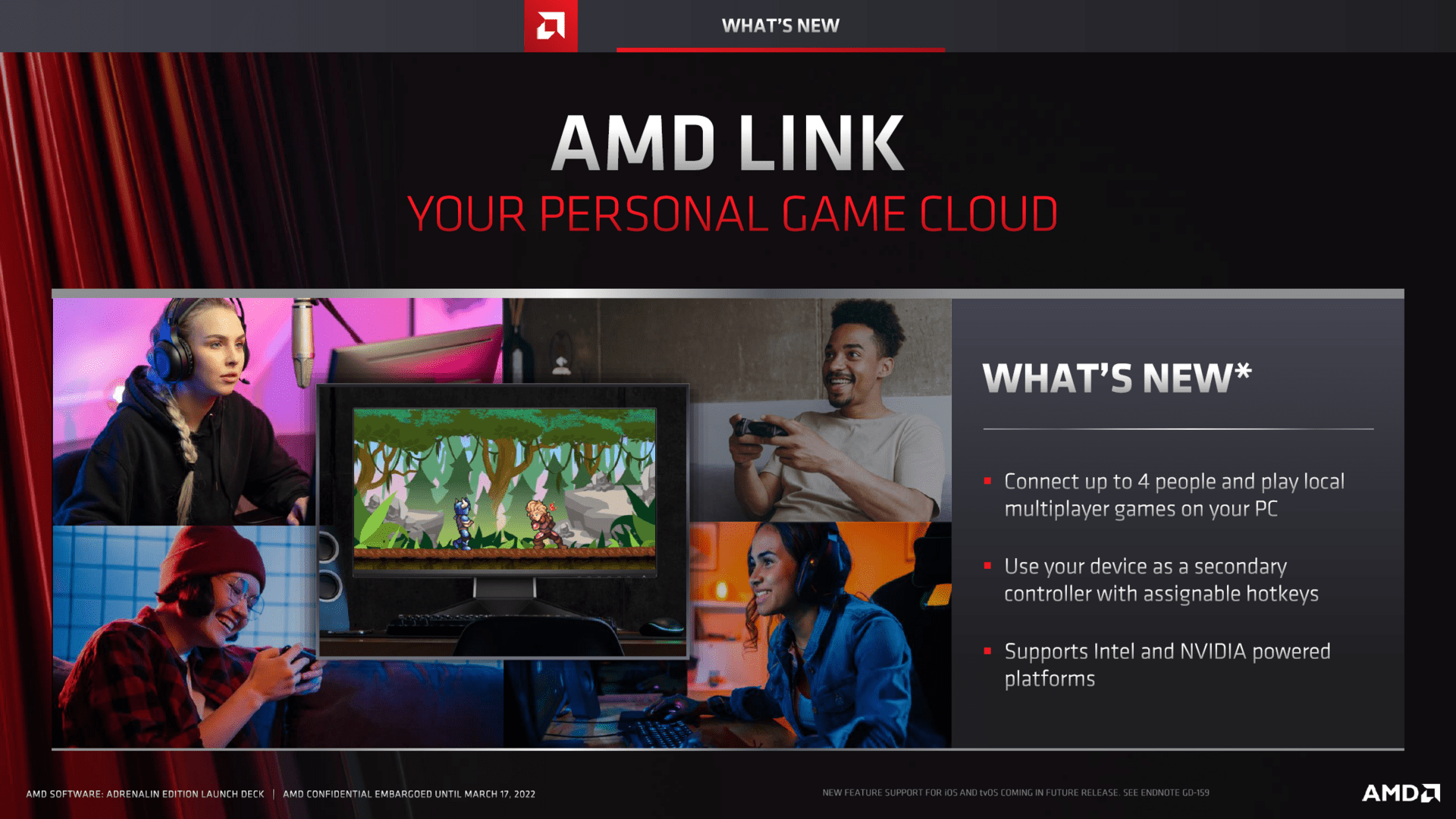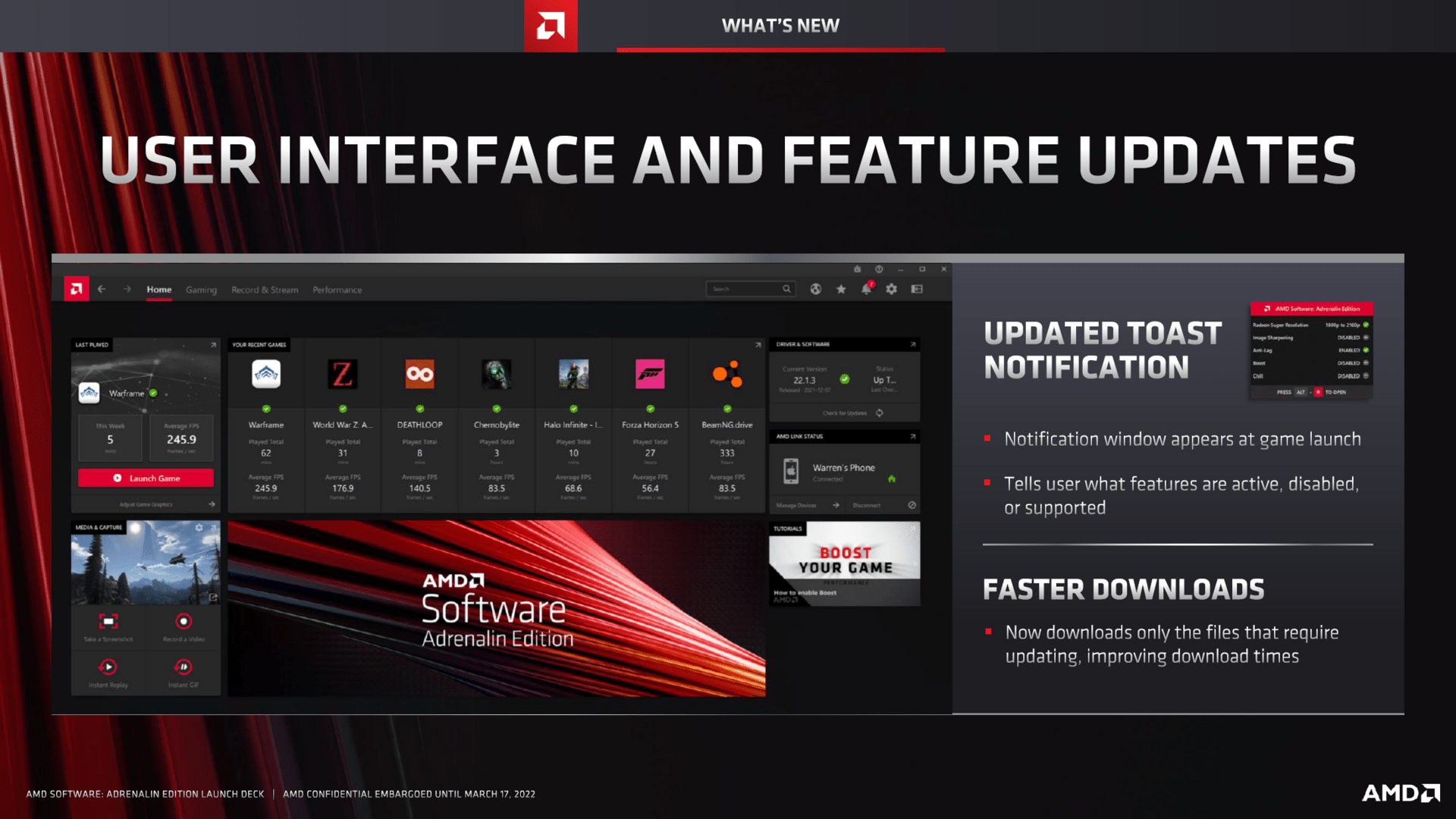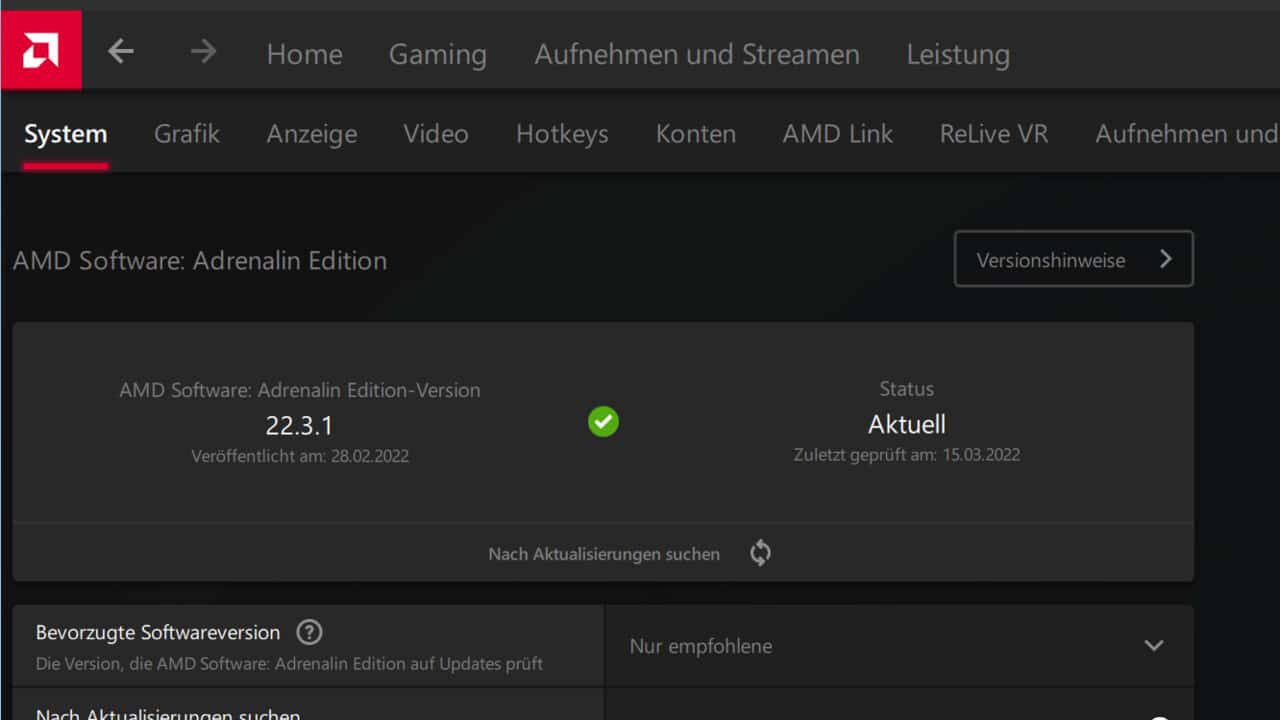AMD Adrenalin 22.3.1 “titleonly”
: Test |CUP | Specs |Config
With Adrenalin 22.3.1, AMD has completed a major driver update. This time there are fewer updates than before, but the software already supports many features. New additions include Radeon Super Resolution and RIS on the Windows desktop. ComputerBase tested the driver.
After Adrenalin 21.4.1 (test), AMD’s next major driver update follows almost a year later. The innovations in Adrenalin 22.3.1 are no longer quite as diverse as before – which would hardly be possible given the already numerous features. However, there are quite a few interesting new features. ComputerBase looked at them in a test.
Adrenalin 22.3.1 in GPU-Z
picture 1 from 2
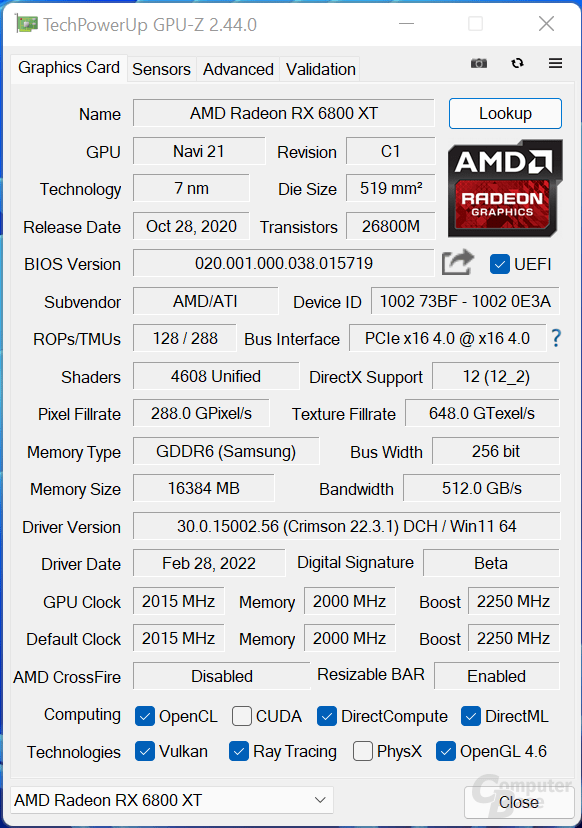
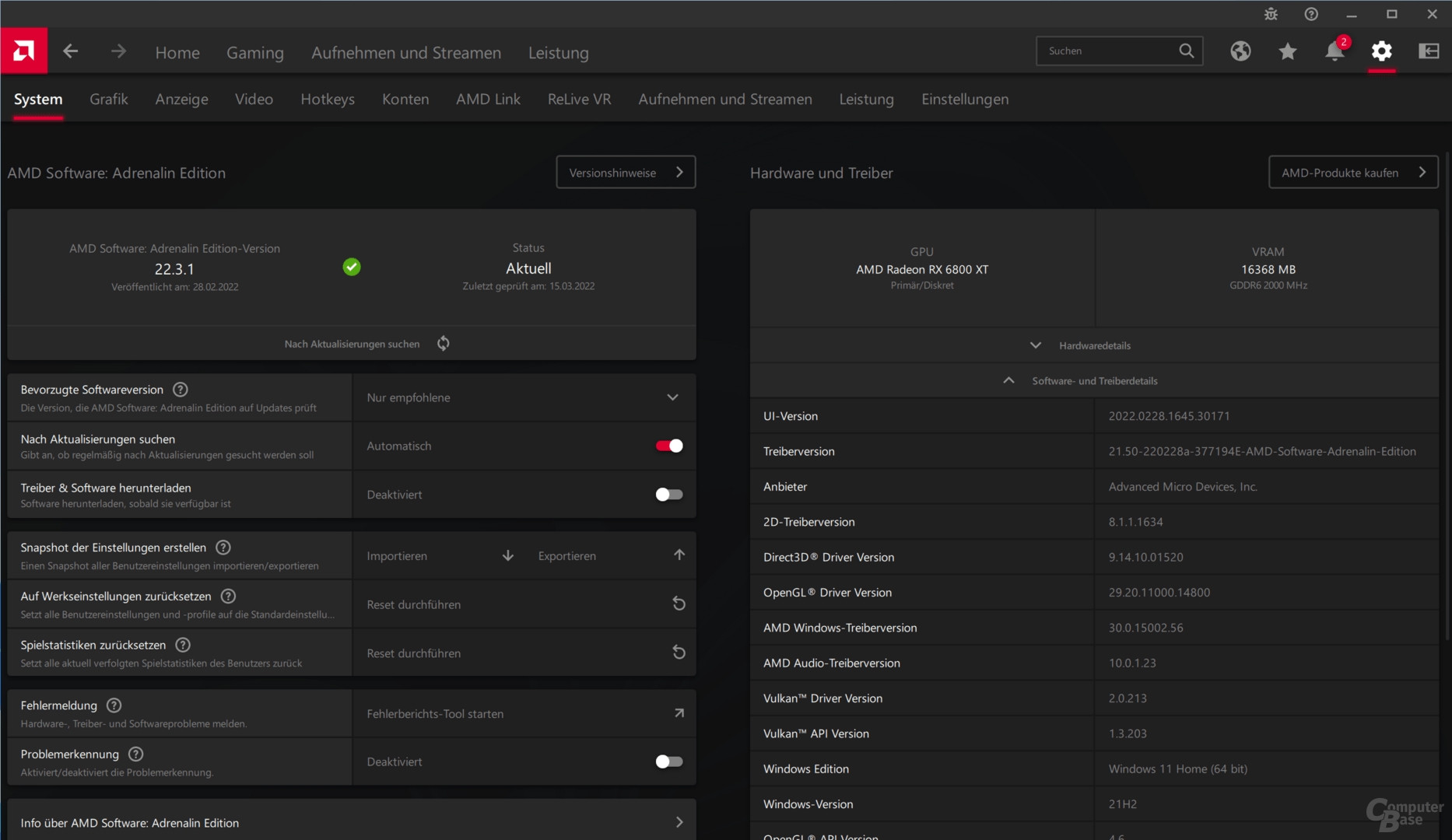
Radeon Super Resolution is FSR Light in all games
Radeon Super Resolution, RSR for short, is a kind of FSR Light for all games. RSR is activated in the Radeon driver – either globally in the graphics settings or in the game profiles for each title individually – and then the same upscaling algorithm works automatically as with FSR in each game. It is currently advisable to switch RSR on and off individually for each title, as the global function did not always work correctly in the test. After that, only the resolution has to be reduced in the game. RSR then automatically scales them up to the monitor’s native resolution.
So if you have a monitor with a resolution of 3,840 × 2,160, activate RSR in the driver and then select 2,560 × 1,440 in the game, you will roughly get the image quality from FSR to “Quality”. It is important to note that this works best for games in exclusive fullscreen mode. If it doesn’t exist and the game only offers a borderless window mode, the resolution of the Windows desktop must be set to the desired value. RSR is currently supported starting with the Radeon RX 5000 series. However, it is not unlikely that AMD will add more models after some time.
But FSR remains at an advantage
Even though RSR works with the same algorithm as FSR 1.0, the technologies are not the same. RSR will not replace FSR 1.0 and FSR is the preferred method. So if a game supports FSR, RSR should be turned off in the driver. And why is FSR better despite the same algorithm? There are primarily two reasons for this.
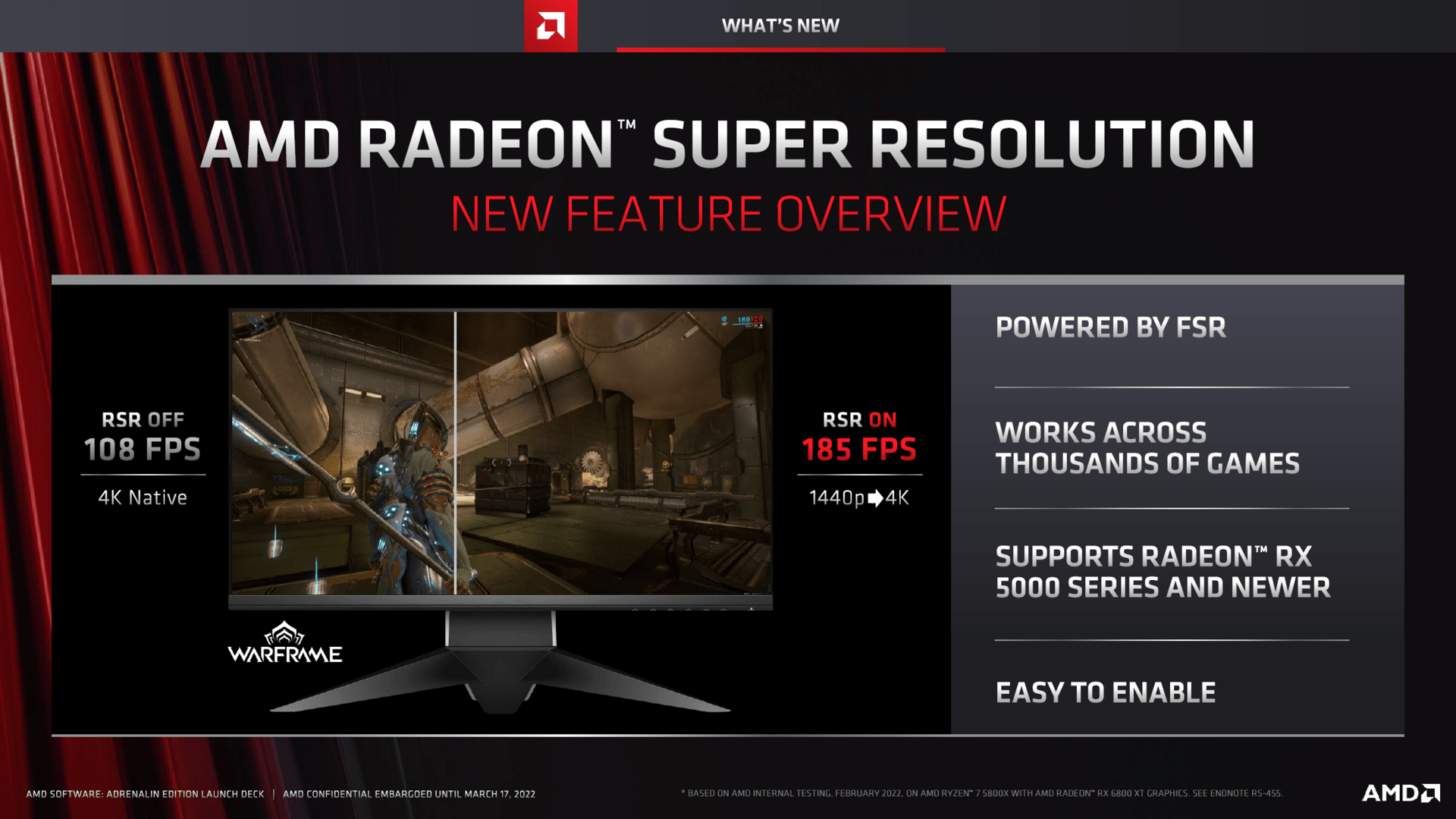
AMD Radeon Super Resolution (Image: AMD)
picture 1 from 4

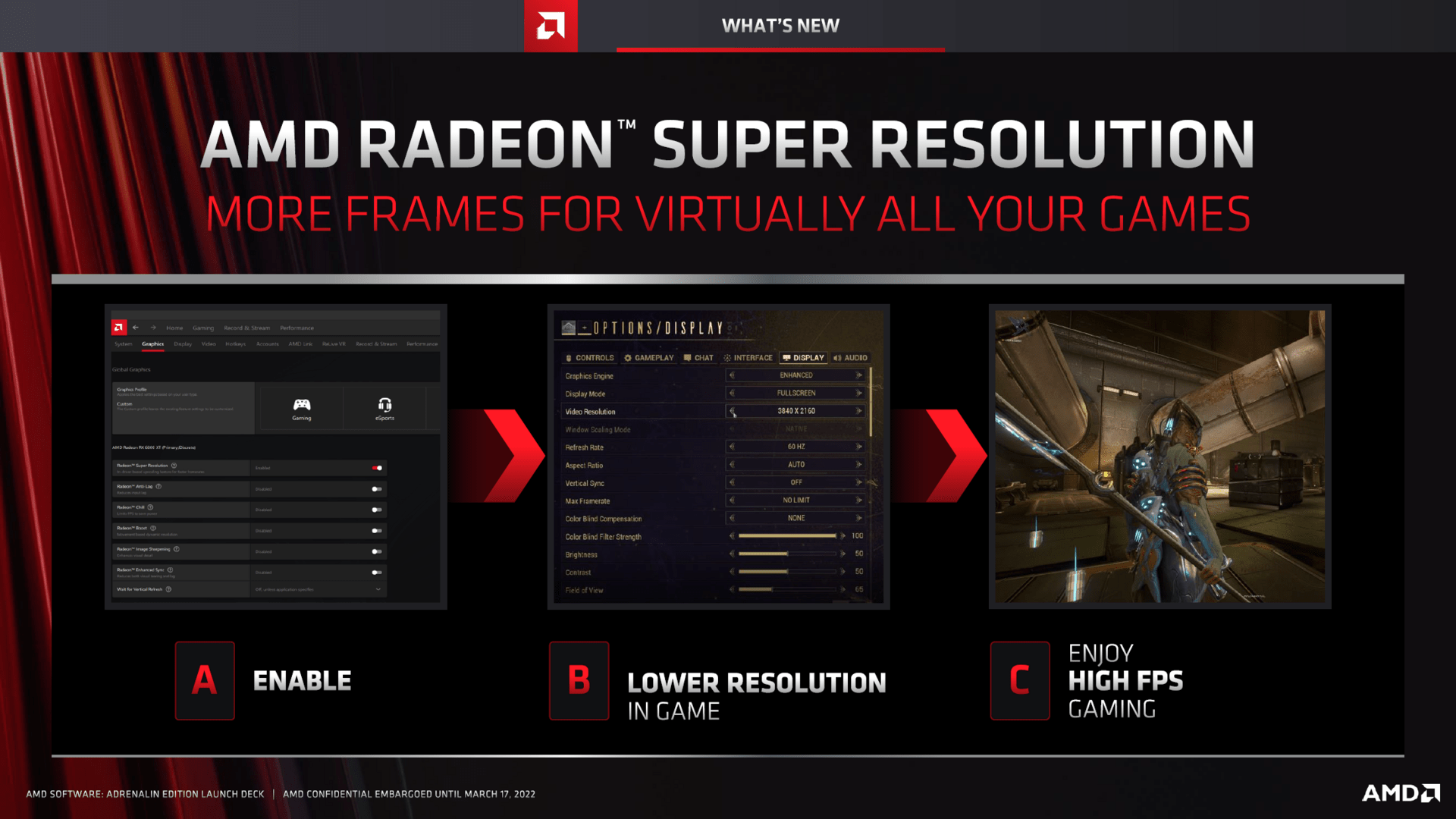
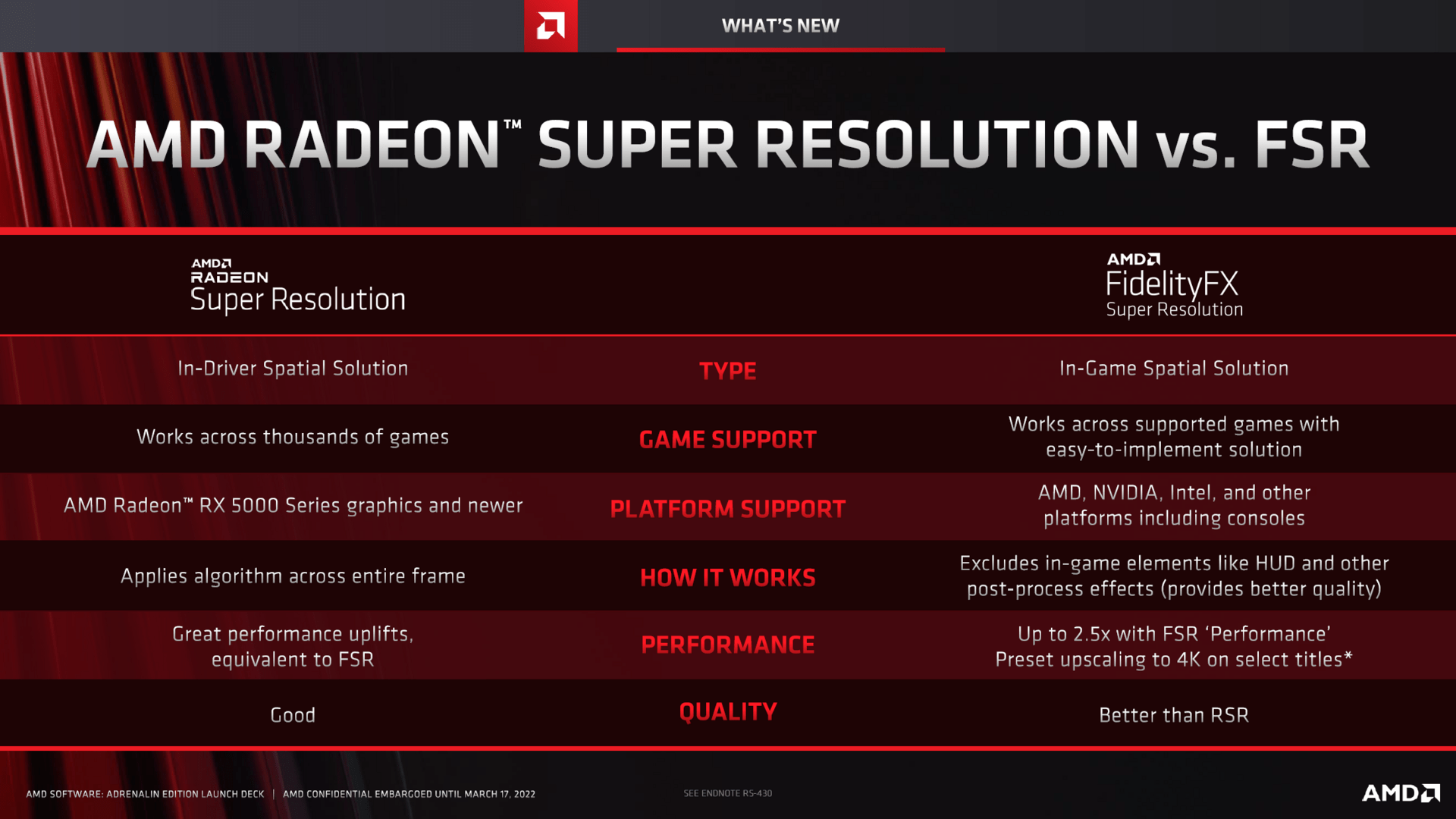
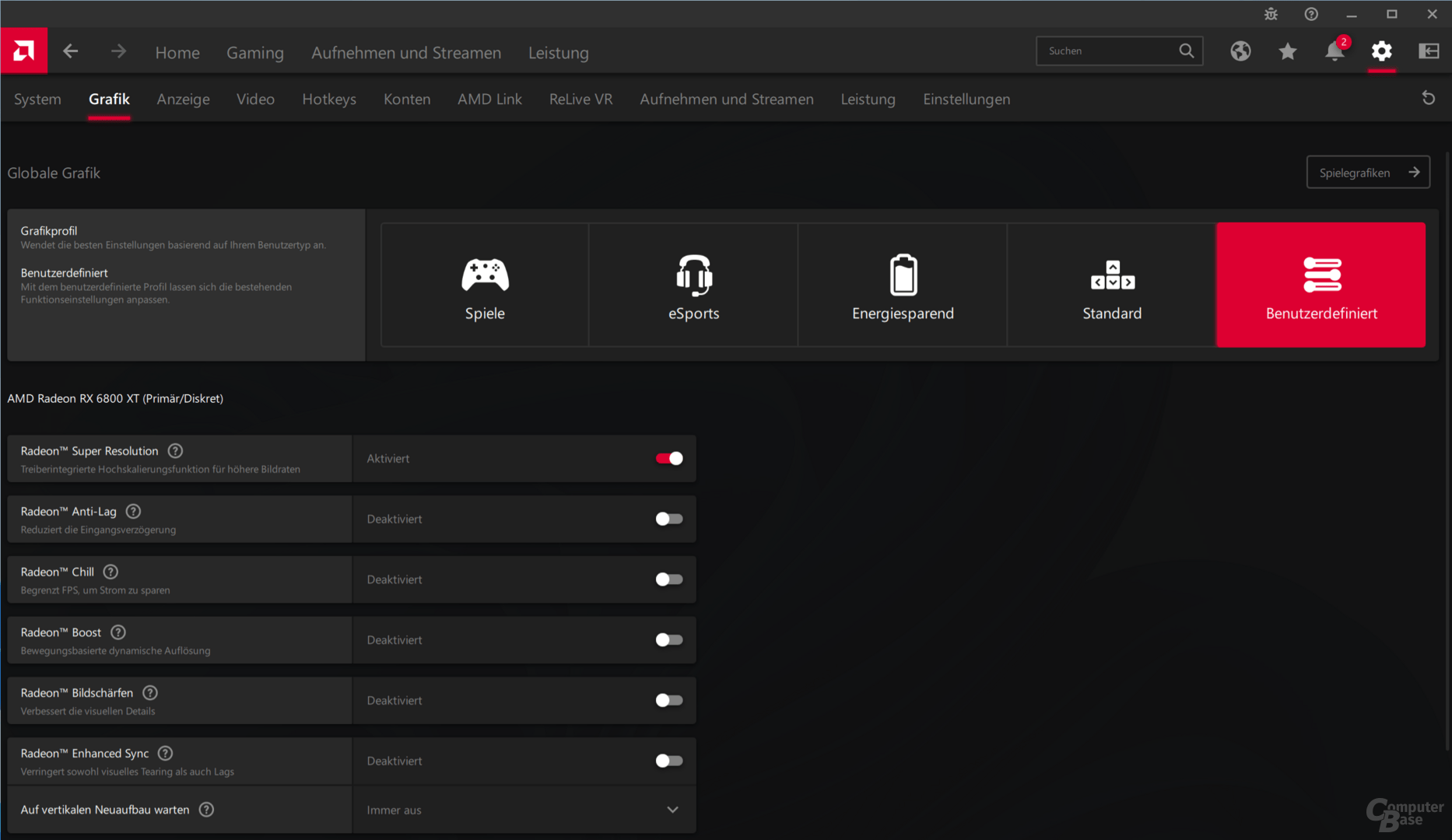
For example, the developer can exclude individual elements from the calculations of FSR. This is especially important for HUDs, which are otherwise scaled, suffer unnecessarily visually and do not perform better. On the other hand, with RSR, the HUD is always edited and the quality of the on-screen displays suffers accordingly.
The second point is resharpening. As a second render pass, FSR always relies on AMD’s own sharpening algorithm RIS, which the developer can adjust to his or her own wishes in terms of sharpness. With RSR, on the other hand, this is not possible because it always uses a fixed sharpness value. And of course it can sometimes be completely unsuitable for a game and lead to problems. When RSR is enabled, RIS in the driver turns off automatically. The resharpening factor for RSR can therefore not be changed manually at the moment.
RSR in Guardians of the Galaxy getestet
ComputerBase took a closer look at RSR in Marvel’s Guardians of the Galaxy (GotG), so that a direct comparison with FSR is also possible. And this is exactly where the big problem with RSR shows up, as far as the specified value for resharpening is concerned. Because GotG seems to be quite sensitive to it.
The graphics in Guardians of the Galaxy are sharpened far too much. This looks good on screenshots in places, but brings visible graphic errors with it. The image sharpness is even higher with RSR and a rendering resolution of 2,560 × 1,440 on an Ultra HD monitor than with native Ultra HD resolution. However, numerous errors are associated with it – the so-called “ringing” is extremely pronounced. So gradients suddenly intertwine with other gradients and radiate their own gradient into the others. In addition, they appear crispy with RSR and differ significantly from the color actually intended.
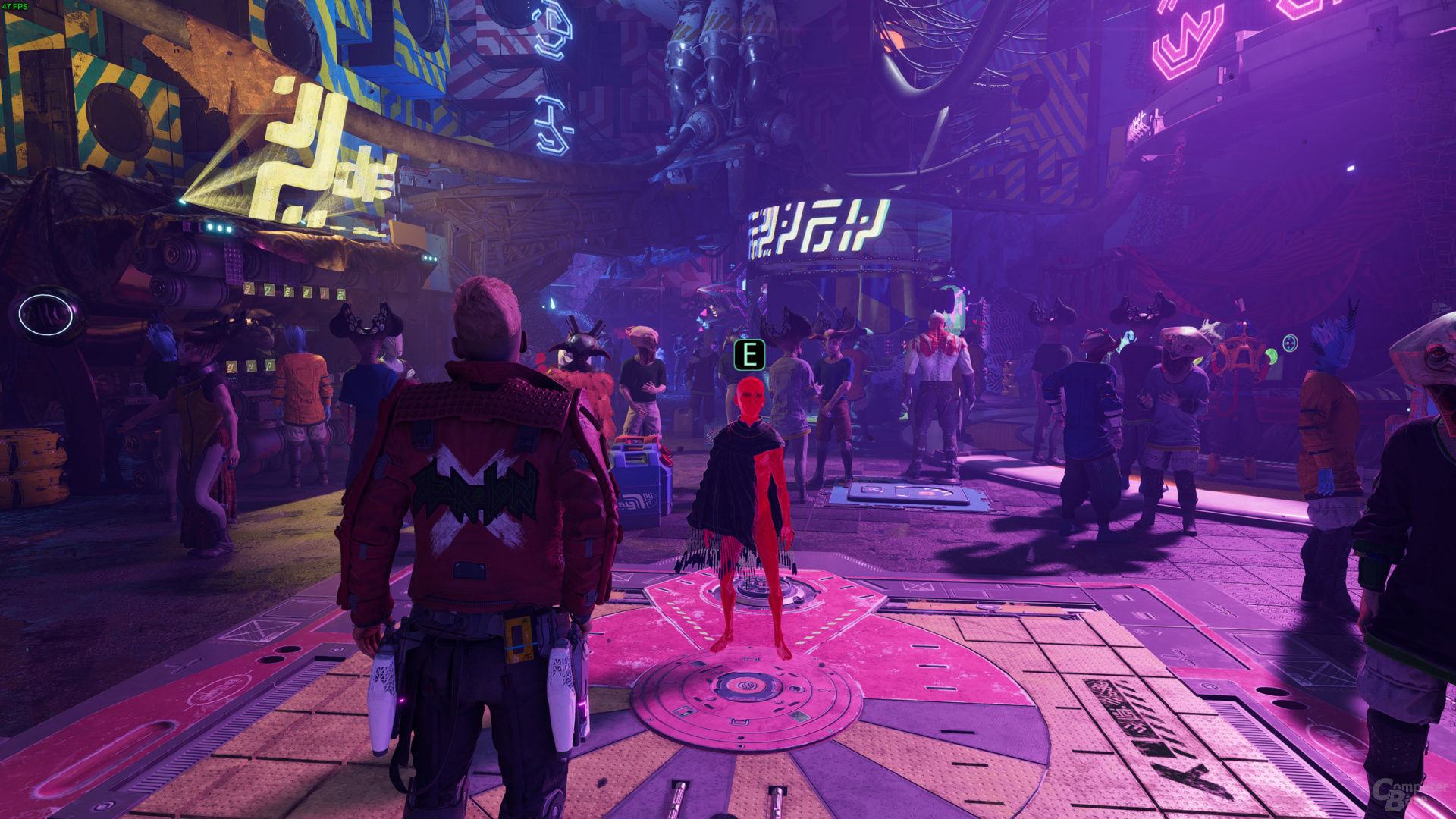
Ultra HD – Native resolution
picture 1 of 5
The fact that the actual FSR algorithm is not the problem is then shown with FSR itself. FSR on “Quality” in Ultra HD and thus the same rendering resolution as RSR WQHD has the same problems in the beginning – apparently the graphics are from Guardians of the Galaxy generally very sensitive to re-sharpening – but the effect is less pronounced here and can only be seen on closer inspection. Even FSR on Performance with a render resolution of 1920×1080 suffers less post-sharpening issues than RSR WQHD, although the effect is more pronounced and distracting than FSR on Quality.
Since AMD apparently applies a fairly high resharpening factor to RSR, the image quality is very dependent on how well a game can handle it. In Guardians of the Galaxy, for example, RSR would not be recommended, but a native, lower resolution would be the better choice (if there were no FSR). Titles that do better with high levels of sharpness, on the other hand, then also work better with RSR. Nevertheless, AMD should reduce the sharpness value of RSR, they have exaggerated a bit there.
The performance of RSR
Not surprisingly, Radeon Super Resolutionen brings a performance boost comparable to that of FSR. When rendering in WQHD, RSR increases performance by 73 percent in Guardians of the Galaxy with ray tracing enabled over native resolution. With Full HD it is another 31 percent. This means that the performance boost is slightly less than with a simply reduced resolution without RSR, which is due to the additional upscaling.
Without RSR, performance is 3 percent higher. Compared to FSR, RSR performs slightly better than FidelityFX Super Resolution with a lead of 2 percent (WQHD) or 1 percent (Full HD). Why there is this small difference is unclear.
AMD RIS in the browser and on videos
Radeon Image Sharpening (RIS) has long been used to improve image sharpness in games. As of Adrenalin 22.3.1, RIS now also works in other applications, which require special support. The goal is to sharpen images and videos. Accordingly, the most important browsers are supported with Chrome, Firefox and Edge. In addition, other applications such as Word, Excel, Powerpoint, Teams, VLC and Acrobat Reader are added.
However, it is important to remember that RIS cannot recognize whether an object should be resharpened or not. On a website, not only images but also text are edited, which can quickly become optically problematic. This can also be seen, for example, on the ComputerBase homepage. The sharpening of the advertising is easy to see, but also very intense. The image of an article is also properly post-processed, but there are also a few pixel artefacts. And text is sharpened as well, albeit minimally. This is exhausting for the eyes in the long run.
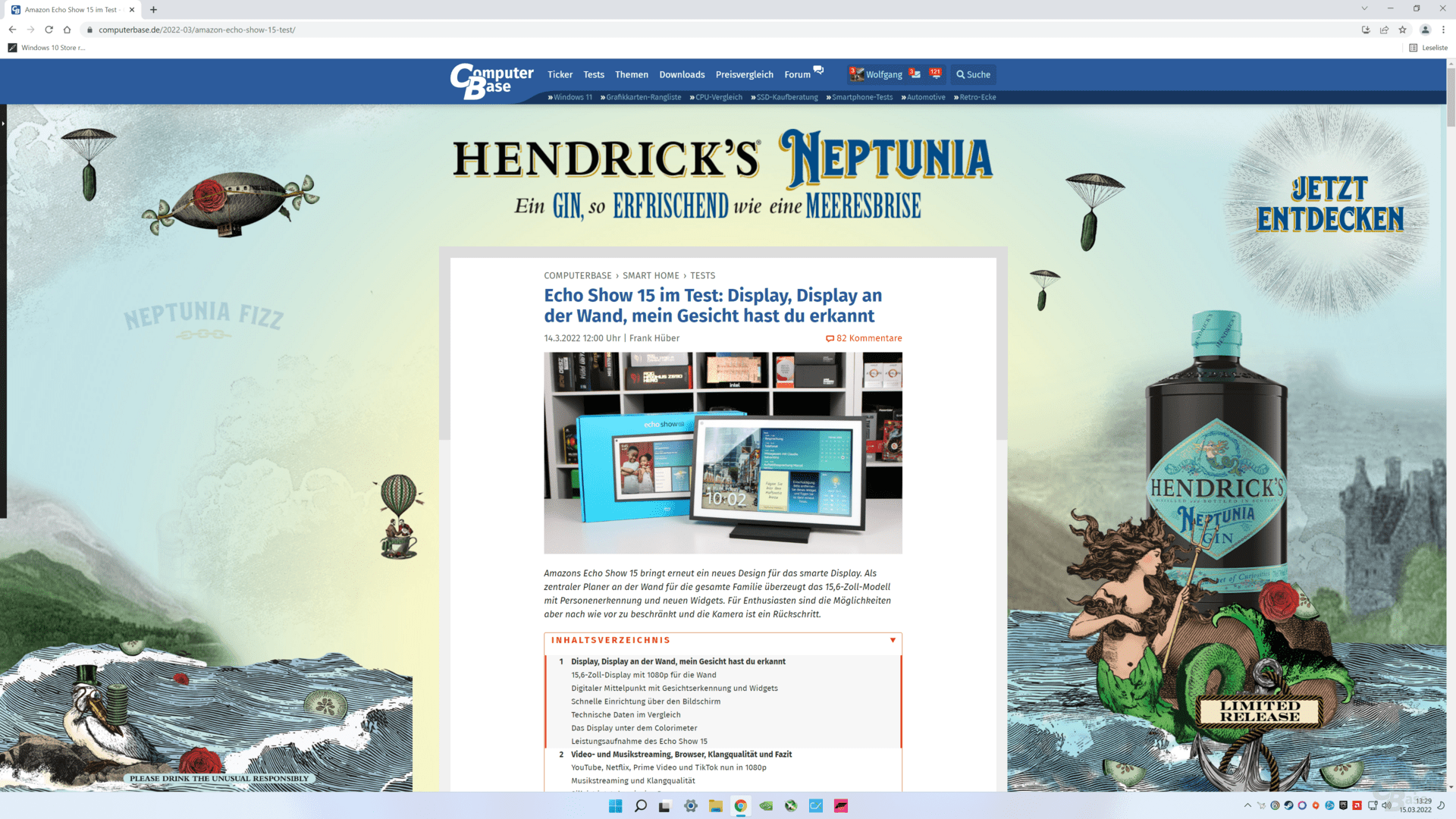
AMD RIS Off on ComputerBase.de
picture 1 Of 3

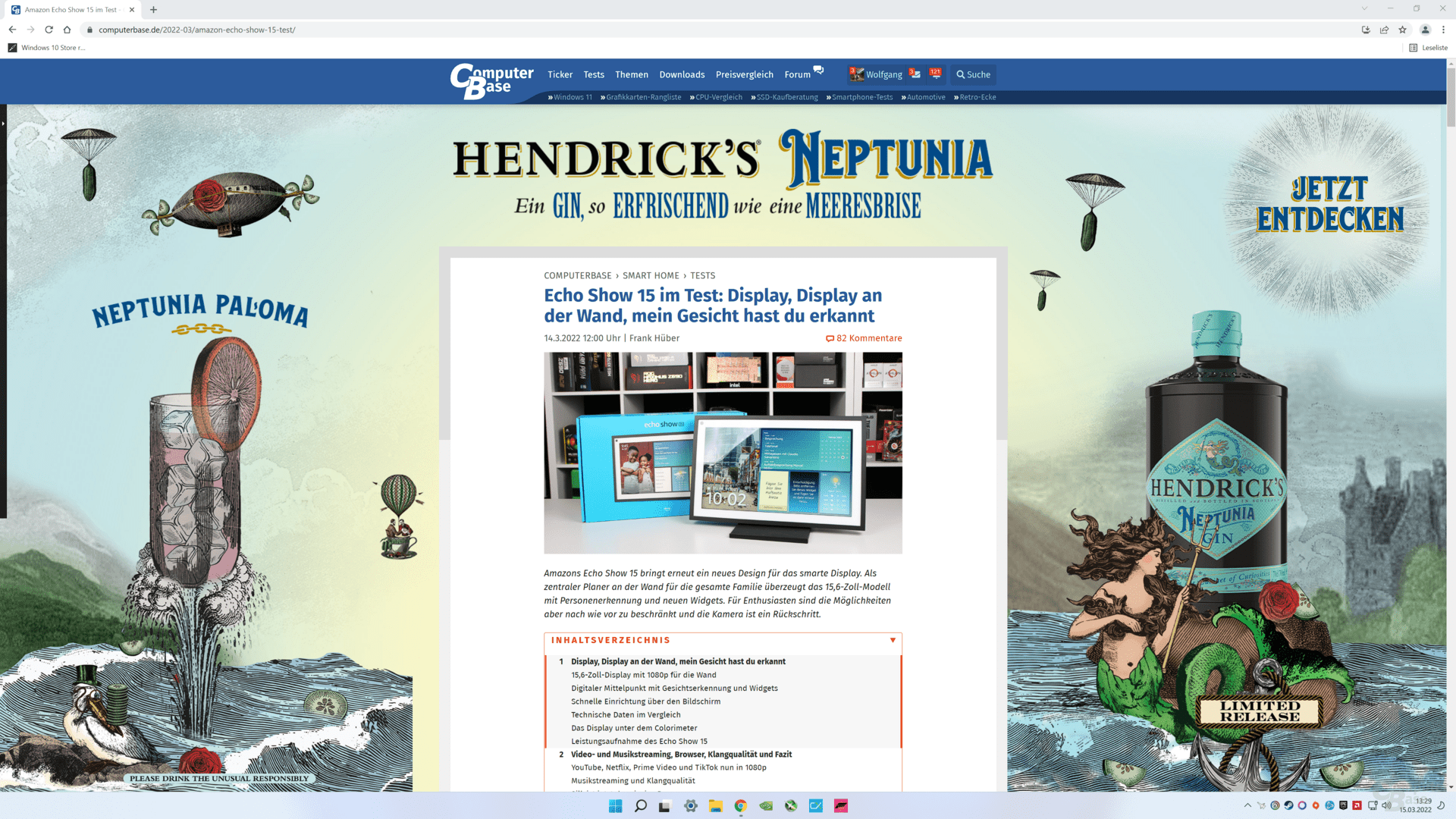
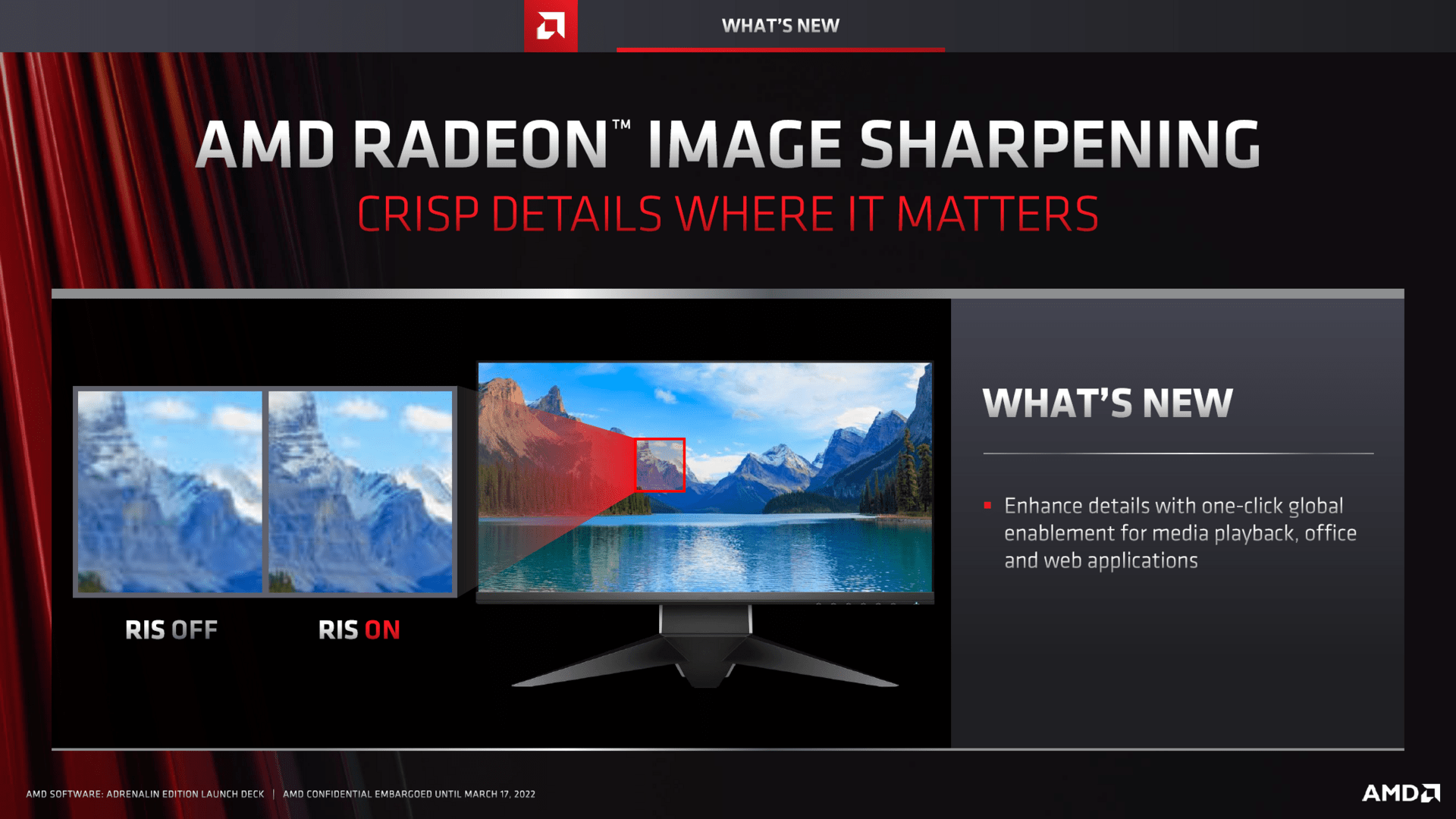
If you want to use RIS not only in games, but also in everyday use, you should significantly reduce the sharpening factor from the standard value of 80. But even then, people like to sharpen things that shouldn’t actually happen. The option is intended for special use rather than in general.
AMD Link, more toast and faster downloads
Link has received further updates which, with Adrenalin 22.3.1 and the Windows software, can now also be run on graphics cards from Nvidia and Intel. In addition, another device such as a notebook or tablet can be used as a second controller including hotkeys. And last but not least, it is now possible to play local multiplayer games such as FIFA with up to four participants via Link.
The so-called “toast notification” has also been updated with the new driver. If desired, it now shows the user in more detail which Radeon features are activated in the driver each time the game is started. And last but not least, the driver download via the driver menu has been improved. The feature now only downloads the packages it needs, reducing the download size.
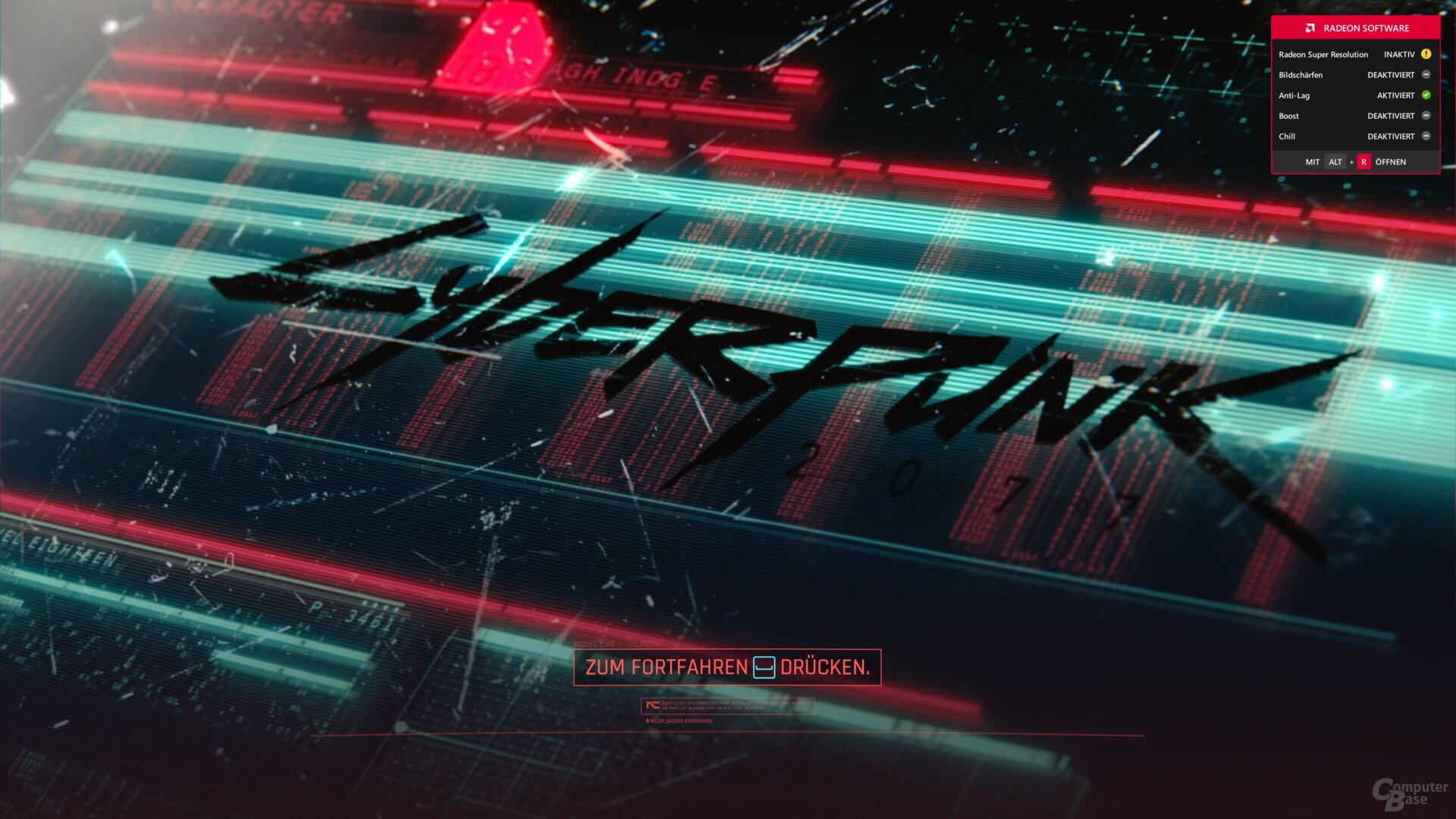
Toast Notifications with the Adrenaline 22.3.1
picture 1 Of 3

